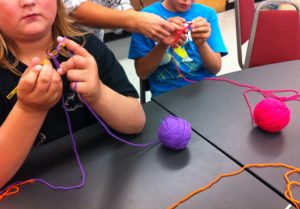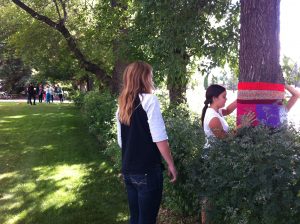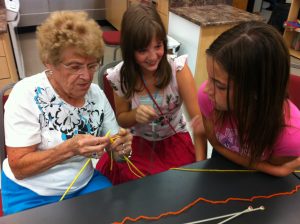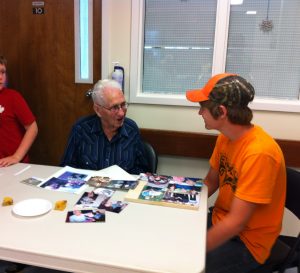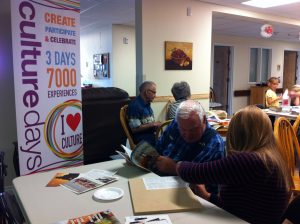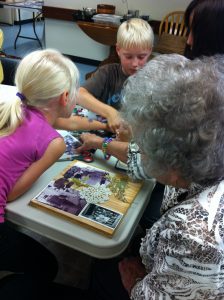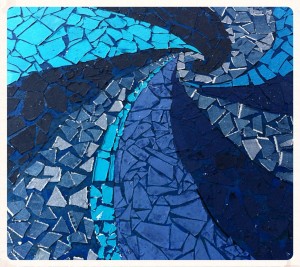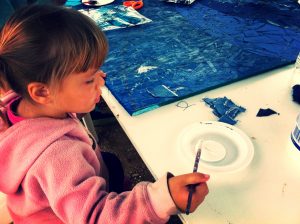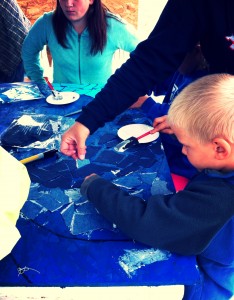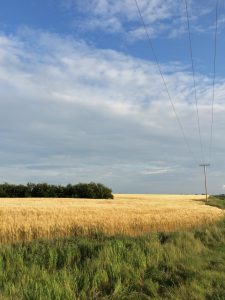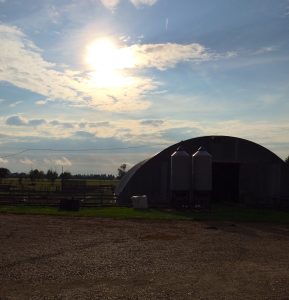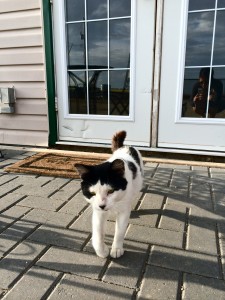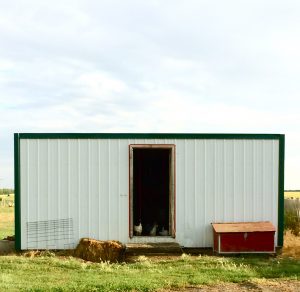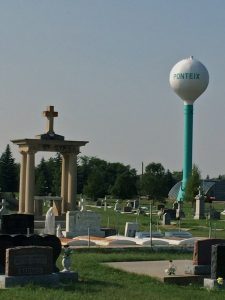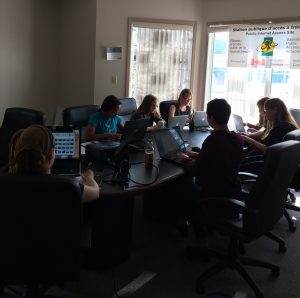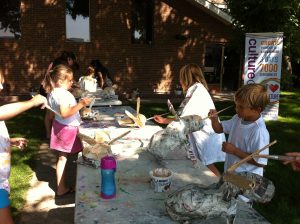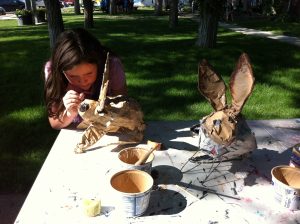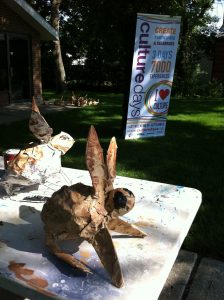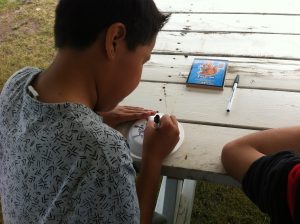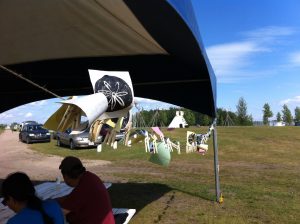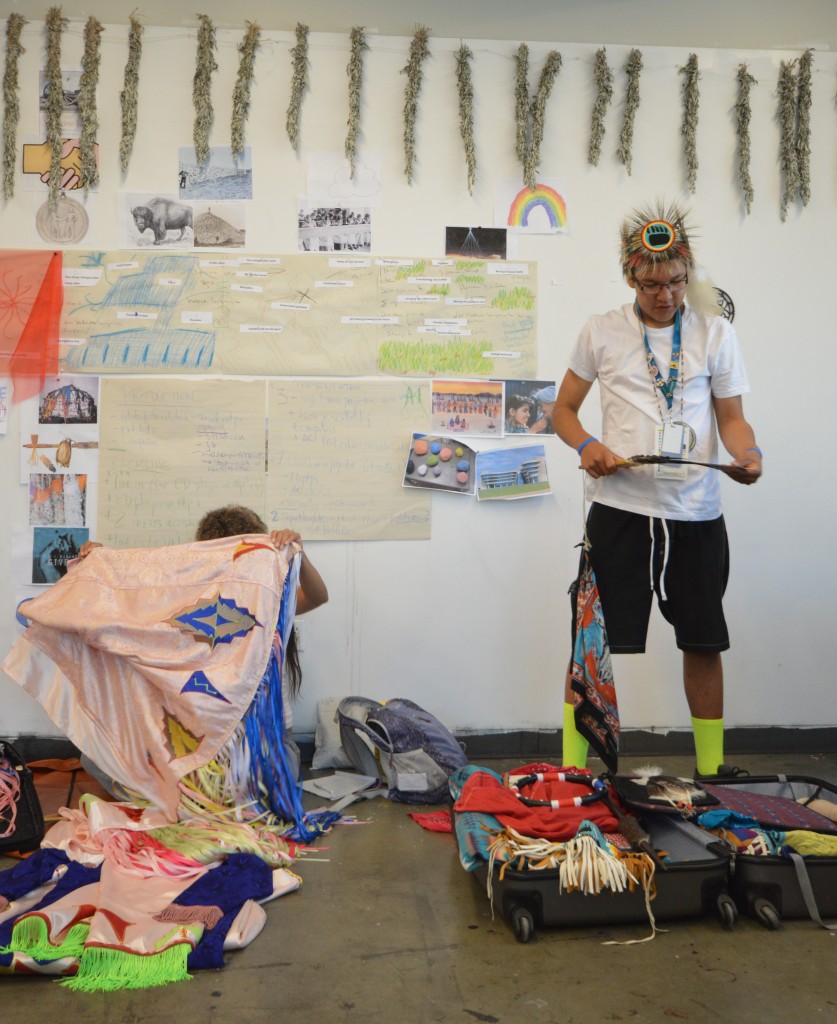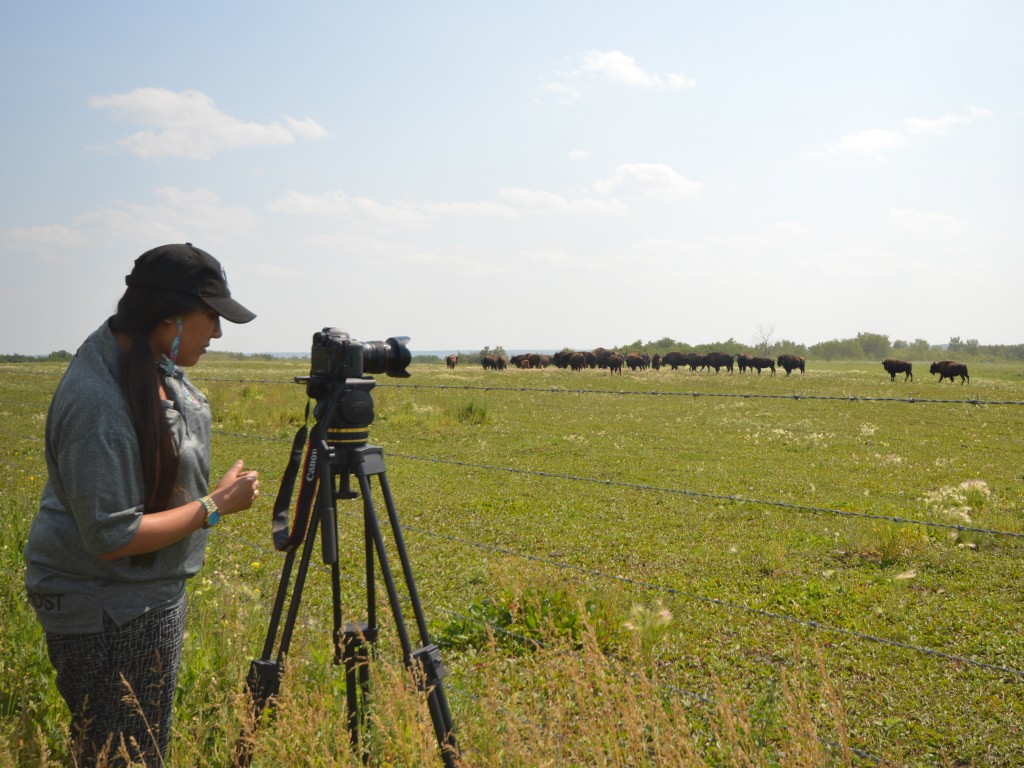The ways in which Art creates community, and the symbiotic nature of Art and Culture, never ceases to amaze me.
…
When I first spoke with the group at Muskoday’s Culture Camp I told them about Marvin’s, the Camp Director’s, request that we depict one of their Clan Mothers: the Wolf. So as to create discussion about the imagery we’d use in this depiction, I asked the youth group, “So, I’d like you to tell me what the Wolf Clan means to you. Do you have any stories you could share? Any information that would help us?”
Nothing. Complete silence.
So then I asked, “Okay, let’s back up a bit. Does the Wolf Clan mean anything to you?”
Again, nothing. The youth did not know about their Clan System. They did not know about the role of Clan Mothers.
At this point Marvin intervened and imparted a little bit of information and said that he would invite someone out that night to tell the group about the Clans.
And so he did.
The next day when I arrived I took my cup of tea and walked over to the Archery Area to visit with the girls. And sure enough I could hear them speaking and retelling the stories they heard the previous night, about the Clans and how they worked. When I asked further questions about the stories they were told the girls would confer with each other to make sure they had their story straight.
And, just like that a decayed portion of Muskoday’s Culture is reignited via the creation of a tile mosaic. It is the spark that starts a wildfire of cultural transmission.
…
So here’s what the process of making of this large broken tile mosaic looks like: I usually arrive at the Culture Camp around 8:00, 8:30. Most times I get a big smile on my face when I pull up to the camp, because there is someone (if not two or three) working away already. I grab a tea or coffee, put on my apron, and join them in figuring out the puzzle.
The day is filled with the constant stream of tea, glueing, and conversation. Some work on the piece for hours at a time. We stand beside each other and dance around the bucket of tile and the pan of glue, and talk…. and talk. It’s amazing the conversations that come about. Some of it is just fun: silly stories and anecdotes. But some of what is said is serious and morose: kids tell me about deaths in the family, sickness, and injuries.
Everyone takes breaks from glueing and breaking tile to go participate in other activities: canoeing, swimming, biking, archery. And of course there’s mealtime! But, eventually, they come back to the tile pieces either in groups or solo and the conversation begins again.
Most nights I quit around 9:00. But, one morning I came back to a finished wolf. So I know the kids don’t stop. Some continue even when I’m not there.
All those conversations, all that sharing, all that trust that occurs while co-creating art is building community. We are becoming friends….And that is the elusive, subversive, magical potential of community art.

